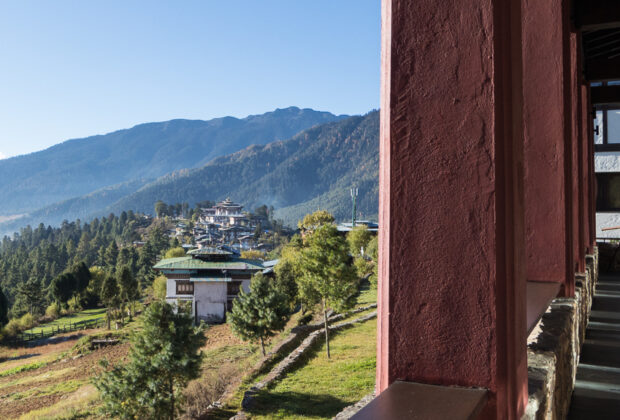Bhutan, a jewel between India and China, is about the size of Switzerland with a population of around 750,000. Within its small boundaries the ecological diversity is amazing. Tropical jungles in the south with elephants, rhinoceros, and tigers, coniferous forest in the mid region with leopards, mountain goats, bears, and variety of bird life, and blue sheep and snow leopards in the high temperature zones.
Through centuries of self-imposed isolation Bhutan has been able to preserve its spectacular environment and nurture its unique culture. Drawing inspiration from its neighbour, Tibet, Tantric Buddhism has flourished and influenced art, crafts, architecture for hundreds of years, and has shaped the Bhutanese way of life. The early 1960s saw Bhutan’s first cautious opening to the outside world. Tourism began for the first time on June 2nd 1974, the coronation day of the nineteen year old King Jigme Singye Wangchuck, the fourth monarch.
The idea of happiness and wellbeing as the goal of development has always been a part of Bhutanese political psyche. It was not pursed as a deliberate policy goal until His Majesty the Fourth King of Bhutan introduced Gross National Happiness (GNH) to define the official development paradigm for Bhutan.
